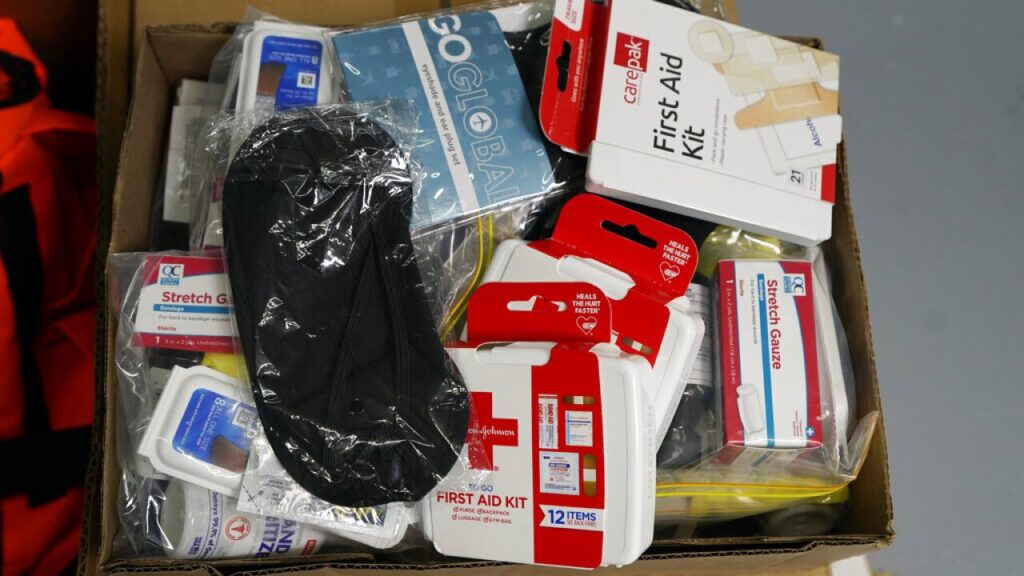When preparing for hurricane season, having a well-organized and comprehensive emergency kit is crucial. It can make all the difference in your safety and comfort during and after a storm.
Here’s a breakdown of the essential supplies, additional considerations, and how to maintain your kit.
Essential Supplies
Your emergency kit should be designed to meet your basic needs for several days. Start by including these key items:
Your emergency kit should be designed to meet your basic needs for several days. Start by including these key items:
- Water: Ensure you have one gallon of water per person per day for at least three days, but ideally, for two weeks. This is for both drinking and sanitation purposes.
- Non-perishable food: Include enough food for a three-day supply if you’re evacuating, or a two-week supply if you’re staying home. Focus on ready-to-eat canned goods, protein bars, and dried foods.
- Battery-powered or hand-crank radio: Staying informed is critical, so pack a radio to monitor weather updates and emergency alerts.
- Flashlight and extra batteries: Power outages are common during hurricanes, so a reliable flashlight and extra batteries are essential.
- First aid kit: Stock it with bandages, antiseptics, gauze, and any other essential items that can help with minor injuries.
- Medications: Prepare a seven-day supply of any prescription medications you or your family members take, along with over-the-counter meds like pain relievers and allergy treatments.
- Multi-purpose tool or manual can opener: A versatile tool can assist with opening cans, making repairs, or cutting through debris.
- Sanitation and personal hygiene items: Include items like moist towelettes, garbage bags, and basic toiletries to maintain cleanliness.
- Cell phone with chargers and backup battery: Ensure you have a portable battery charger for your phone to stay connected.
- Important documents: Keep copies of identification, insurance, medical records, and other critical documents in a waterproof container.
Additional Considerations
To enhance your emergency kit, you may want to include these additional items:
To enhance your emergency kit, you may want to include these additional items:
- Cash and change: Power outages can render ATMs and credit card machines useless, so it’s essential to have cash on hand.
- Emergency blanket: These are lightweight and designed to retain body heat in emergencies.
- Change of clothes and sturdy shoes: Pack weather-appropriate clothing, including a pair of sturdy shoes for protection.
- Whistle: Use this to signal for help in case you are trapped or need to attract attention.
- Dust masks and plastic sheeting: These can help filter contaminated air and create temporary shelter if needed.
- Local maps: In case GPS systems fail, have a local map handy to navigate evacuation routes.
- Pet supplies: If you have pets, prepare a go-bag with their food, water, medications, and any other essentials.
Storage and Maintenance
Proper storage and maintenance of your kit are essential for ensuring it’s ready to go when you need it:
Proper storage and maintenance of your kit are essential for ensuring it’s ready to go when you need it:
- Use an easy-to-carry container: Store your supplies in a backpack or duffel bag that you can grab quickly in case of evacuation.
- Designate a storage location: Choose a central place in your home, easily accessible to all family members, and make sure everyone knows where the kit is located.
- Replace expired items annually: Go through your kit once a year and replace expired food, medications, or batteries to keep it fully functional.
Special Considerations
It’s also important to tailor your kit to the specific needs of your family:
It’s also important to tailor your kit to the specific needs of your family:
- Children: Include comfort items like small toys, games, or coloring books to keep children occupied during stressful times.
- Medical needs: For family members with special medical requirements, pack extra eyeglasses, hearing aids, or other medical equipment.
- Pets: Prepare a separate emergency kit for your pets with food, water, leashes, and other supplies they may need.
Conclusion
By assembling a well-rounded emergency kit and regularly maintaining it, you can better protect yourself and your family during hurricane season. Tailor your kit to your unique needs, and stay prepared for future storms.
By assembling a well-rounded emergency kit and regularly maintaining it, you can better protect yourself and your family during hurricane season. Tailor your kit to your unique needs, and stay prepared for future storms.


